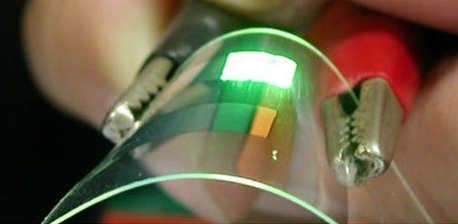New market for organic light emitting diodes
 Organic light emitting diodes (OLEDs) are thin film multilayer devices composed of carbon molecules or polymers. Organic light-emitting diode (OLED) technology is a new lighting technology and is currently at a critical stage of development. Although only OLED displays have been commercialized, industry experts believe that this lighting technology cannot be commercialized until 2015 without a large capital injection.
Organic light emitting diodes (OLEDs) are thin film multilayer devices composed of carbon molecules or polymers. Organic light-emitting diode (OLED) technology is a new lighting technology and is currently at a critical stage of development. Although only OLED displays have been commercialized, industry experts believe that this lighting technology cannot be commercialized until 2015 without a large capital injection. Due to the advantages of organic light emitting diode (OLED) materials, when applied to displays, it will undoubtedly have far-reaching effects. Compared with existing displays: CRT (Cathode Ray Tube Display), PDP (Plasma Display), and LCD (Liquid Crystal Display), OLED displays have the following obvious advantages:
1, technical advantages - no radiation, ultra-thin (up to 1 mm or less), soft display, the screen can be curled;
2, cost advantages - OLED manufacturing process is relatively simple, the cost of mass production than the LCD to save at least 20%;
3, strong adaptability - can display normally at -45 °C ~ 80 °C;
4, energy-saving - due to organic materials emit light, low drive voltage, no need for a backlight source, thus saving energy;
5, the perspective can be large - close to 180 degrees;
6, the reaction speed - OLED display in the single element of the reaction speed is 1000 times the LCD screen, you can achieve exciting video playback, color dazzling, will never appear on the LCD screen drag;
7, shape advantages - OLED weight is much lighter than the LCD, and can be more thin and light.
Although people always think that the main drawback of OLED is that its lifetime is shorter than that of LCD, which can only reach 5,000 hours at present, and LCD can reach 10,000 hours, the latest technology shows that by using phosphorescent materials and amorphous silicon for making TFT backplanes. Integration, OLED products may extend the life of 3 times. Because OLED has so many advantages, it has a wide range of market applications. The main areas include: commercial areas such as POS machines and ATM machines, copiers, game machines, etc.; communications fields such as mobile phones, mobile network terminals, etc.; computer fields such as PDA, commercial and home computers, etc.; consumer electronics products such as audio equipment, digital cameras , portable DVD; industrial applications such as instruments and meters; transportation areas such as GPS, aircraft instruments.
Since the beginning of the OLED display was mainly used in the field of small screens, it was long predicted that it will achieve initial success in the digital field. Sure enough, Kodak's successful launch of the new digital camera Easy Share LS633 at the 79th International Photographic Marketing Association's annual meeting and trade show (PMA) in March 2003 made OLED's small-screen applications unreliable.
In addition to digital cameras, mobile phones have become the second bridge to overcome OLEDs. Since OLEDs do not require backlights, they can be very thin, which makes them very "thin". Experts say that in the next few years, mobile phones may become Thin as a piece of paper. Coupled with the low power consumption of the OLED display, the standby time of the mobile phone may reach 30 days in the future. With the approach of 3G, mobile networks will provide more video services to people, and the more color display functions are required for mobile phones, the OLED display will be fully capable. Nowadays, many transparent and lightweight concept phones will become possible in the future.
Nickel Iron Battery,Nickel Iron Alkaline Battery,Solar Battery,Nickel Iron Battery For Solar
Henan Xintaihang Power Source Co.,Ltd , https://www.taihangbattery.com